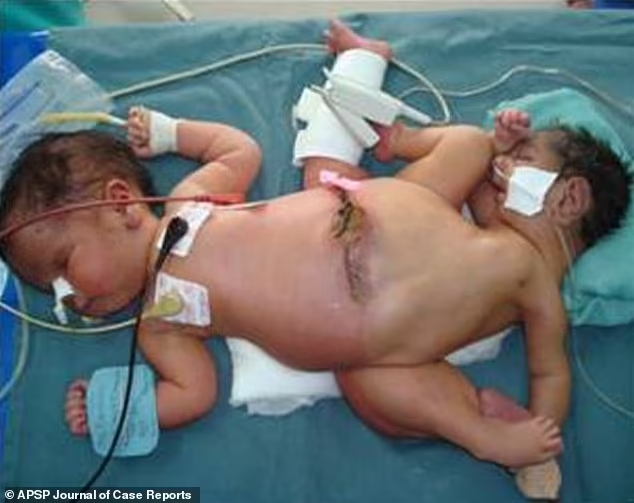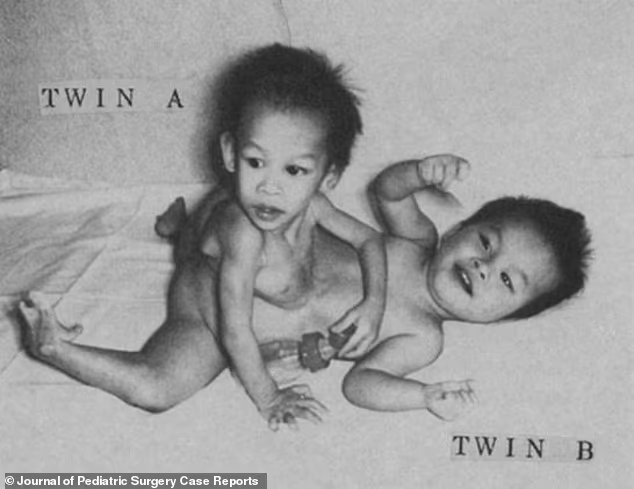In a remarkable medical phenomenon, conjoined twin boys were born in Indonesia in 2018 with a rare condition known as Ischiopagus Tripus, which occurred in only one in 2 million births. The twins were fused together at the pelvis, resembling a “spider,” a term popularized by the famous conjoined twins Ganga and Jamuna Mondal of India.
The story first reported by Dailymail.com revealed that the Indonesian twins were born with three legs, four arms, and one shared penis, as well as a single bladder, rectum, and intestine. Due to their unique anatomy, the toddlers were unable to sit up and were forced to lie flat for the first three years of their lives, defying the odds by surviving gestation and childbirth.

To improve their quality of life, a team of skilled surgeons performed a complex operation to amputate the third leg and stabilize the twins’ hip and pelvic bone. This procedure aimed to enable them to sit upright and provide them with a degree of normalcy.
Conjoined twins are extremely rare, accounting for one in 50,000 to 200,000 live births. They occur when a single fertilized egg fails to separate completely during early development, resulting in two individuals who are physically connected. Another theory suggests that two separate embryos may fuse together in the early stages of development.

Interestingly, female conjoined twins are three times more common than male conjoined twins. Tragically, in two-thirds of cases, at least one twin either dies or is stillborn.
In the case of the Indonesian twins, doctors believed that one twin had an underdeveloped kidney (left kidney hypoplasia), while the other had only one kidney. Despite this, their parents reported no complications during pregnancy, and there was no family history of medical issues.

Researchers have noted that Ischiopagus Tripus is an exceptionally rare form of conjoined twins, with only a handful of cases reported in medical literature. The team in Indonesia estimated that just six to 11 percent of all conjoined twins are Ischiopagus.
The surgery to separate the Indonesian twins was successful, with no complications reported during the procedure or at a three-month follow-up. This life-changing operation allowed the twins to sit up and potentially stand, granting them greater independence.

Previous case studies have documented similar instances of Ischiopagus Tripus conjoined twins. In 1994, a report detailed a pair of such twins born in China in 1989 who were successfully separated in 1992 after a nearly 10-hour operation. Another case study focused on conjoined twins born in Pakistan in 2011 who were fused at the lower half of their bodies, with one twin being significantly smaller and more feeble. Tragically, both twins died before they could be separated.
The new case report, published in the American Journal of Case Reports, sheds light on this incredibly rare medical phenomenon and the challenges faced by conjoined twins and their families. The successful separation of the Indonesian “spider twins” offers hope for improved quality of life and independence for those born with this condition.










